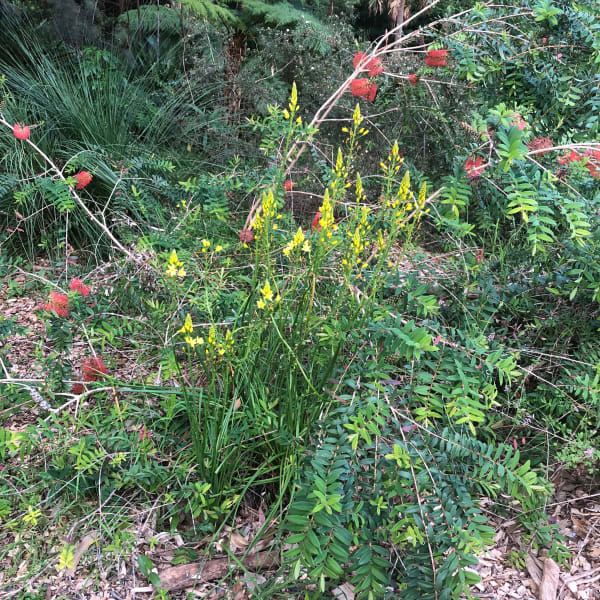It's fair to say that spring has sprung already, and many of Illawarra's local plants are flowering or fruiting weeks or even months ahead of normal.
One that has really caught my eye is the Bulbine Lily (Bulbine bulbosa), a small, dense perennial herb with masses of bright yellow flowers in a good spring. I'm not entirely sure what constitutes a 'good spring' for this beautiful species, but the many plants about to burst into flower at Purrungully Woodland last weekend suggest that this is going to be one.
On an hour's wander in that beautiful woodland area in West Dapto, we saw dozens of plants putting up flower spikes, though no flowers actually open. By now they're probably looking spectacular.

In the Illawarra region, West Dapto is one of the strongholds of Bulbine Lily, and I've rarely seen it elsewhere (apart from in gardens). One of the qualities of this species is that it can form large, or very large, stands in the right conditions.

As a garden plant, Bulbine Lily does well in a part-sun position, with plenty of moisture to promote solid flower growth. In natural conditions it grows together with a wide variety of other ground covers and low plants, so you can mix and match it with many different species, such as Prickly Rasp Fern (Doodia aspera/Blechnum neohollandicum), Basket Grass (Oplismenus aemulus) and Bearded Tylophora (Vincetoxicum barbatum).
I have found in garden situations that it can be overrun by some of the more dominant grasses such as Weeping Grass (Microlaena stipoides). But in remnant vegetation this doesn't seem to happen, and I'm not sure why.





